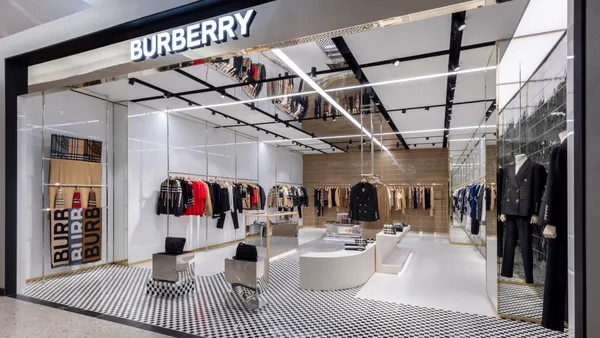Dive Brief:
-
Nordstrom beat expectations in the second quarter thanks mostly to strong performance at its full-line stores, but joined other retailers in lowering its expectations for the year. Total company net sales rose 12% year over year, with its anniversary sale contributing about 200 basis points, and gross merchandise value rose 12.2%. Digital sales rose 6.3% and were about 38% of sales.
-
EBIT rose 33.8% to $202 million; excluding costs from the wind-down of the Trunk Club box service, adjusted EBIT reached $210 million. Net earnings rose 57.5% to $126 million. Ending inventory rose 9.9%, per a company press release.
-
Despite its strength in the quarter, Nordstrom lowered its outlook, saying it now expects full-year sales to grow 5% to 7%, down from its previous estimate of 6% to 8%, and EBIT margin to reach 4.5% to 4.9%, down from 5.8% to 6.2%.
Dive Insight:
The inflation pressure that is especially squeezing lower-income households hurt off-price Rack sales in the period but left full-line Nordstrom stores mostly unscathed, CEO Erik Nordstrom said Tuesday.
“I think it’s … not a shock to say that it’s a volatile environment,” he said, according to a Seeking Alpha transcript. “We saw a change in particularly lower income customer segments. And we think the prudent thing is to change our plans accordingly.”
That includes reducing its sales plans and working through inventory that customers weren’t interested in, especially clearance product and some private-label merchandise, according to prepared remarks from Chief Brand Officer Pete Nordstrom. The retailer is seeing even designer sales slowing, though at the moment they’re still growing by double digits, so more markdowns on that merchandise will also likely be necessary, he said.
Full-line net sales rose 14.7%, while Rack sales rose 6.3%, per the company’s release, a result that BMO Capital Markets analysts Simeon Siegel and Daniel Stroller called “the ongoing tale of two diverging paths.” While demand softened through the second quarter after late June, that was seen mostly at Rack, where July sales decelerated 9 percentage points, Erik Nordstrom said. Higher-priced merchandise generally outperformed lower-priced products in the quarter, executives said.
The company continues to sweep away lower-priced items at Rack to make way for premium brands that those customers expect to encounter. Erik Nordstrom reiterated in prepared remarks that 90% of labels sold at full-line stores are found at Rack, which he said is a differentiator for the off-pricer. In Q2, sales of the top 100 brands at Rack rose 17%, which he said “underscores the opportunity from increasing our supply of premium brands.”
Still, the banner continues to underperform in the off-price segment, according to BMO’s analysts, who said “it remains a question as to what Rack can to do to close the relative gap to other off-pricers,” though they noted that the growth from the top brands at Rack is encouraging.
This all leaves both banners facing stiffer challenges for the rest of the year. While higher-income customers showed up for Nordstrom in Q2, GlobalData research shows confidence sliding for that cohort now as well.
“[T]his is likely to drag down future growth. Moreover, we think there will be further pressure on Rack as its core customers continue to cut back,” Saunders said, adding that Nordstrom will also be facing tougher year-on-year comparisons in coming quarters.
“Overall, Nordstrom is in a better position than it has been for some time,” he said. “However, the external environment is souring, and that’s likely to interrupt its positive trajectory.”















